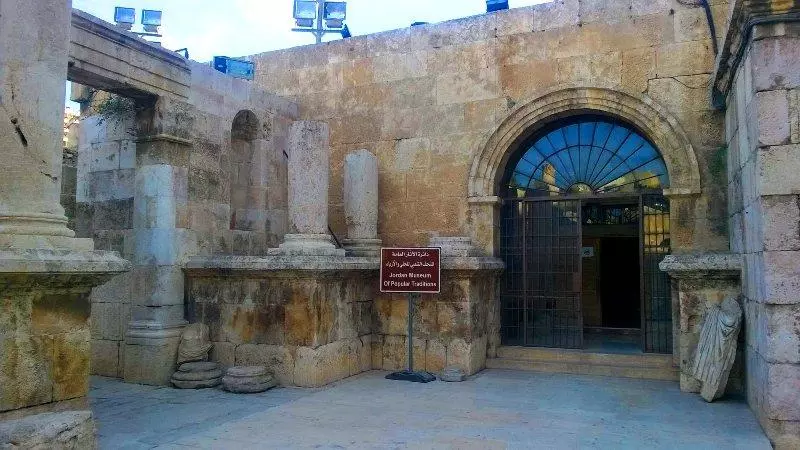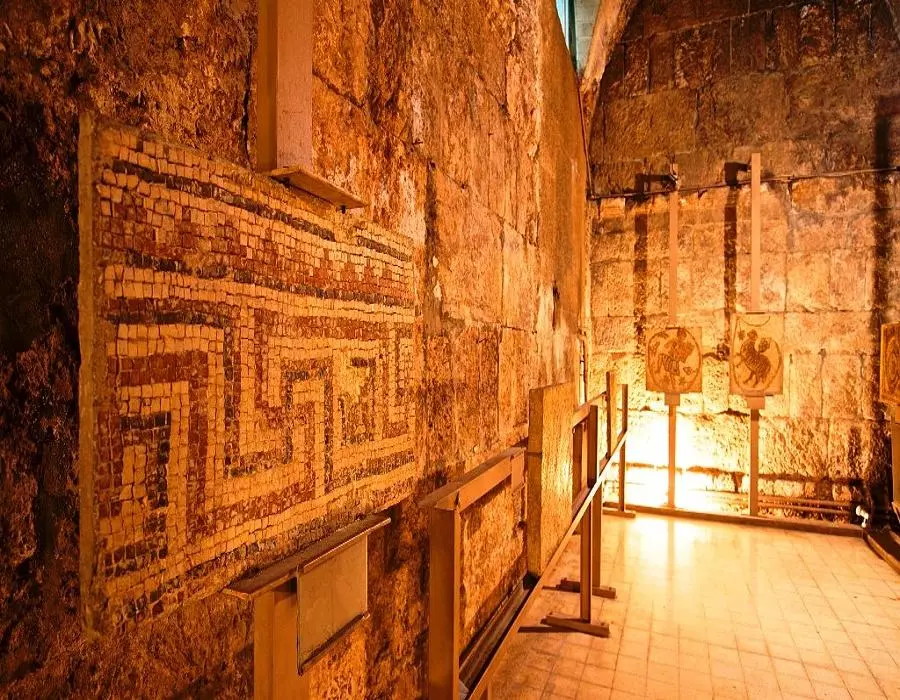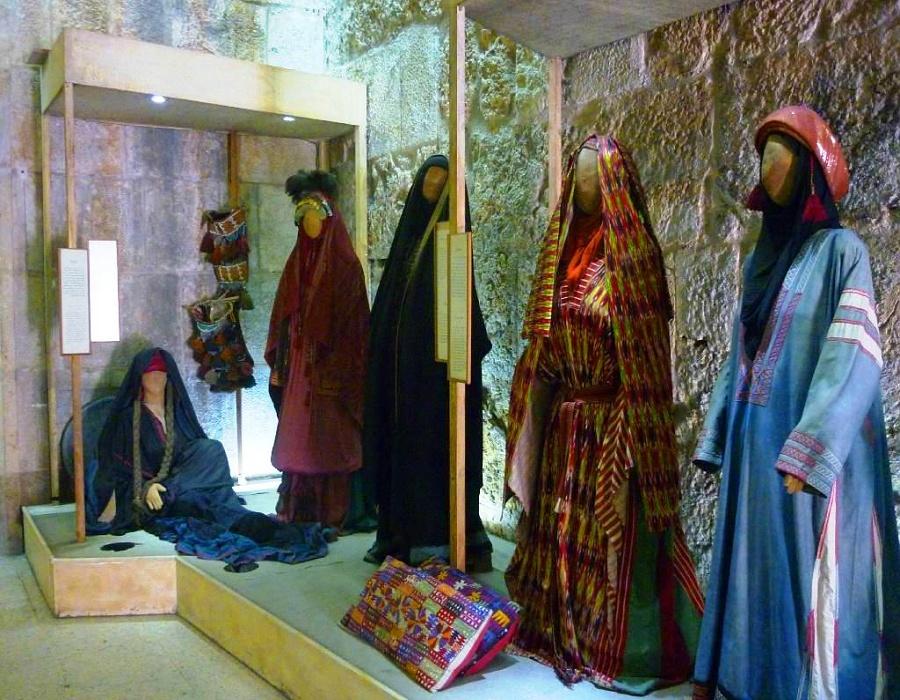The lowest nature reserve on earth !
JORDANIAN MUSEUM OF POPULAR TRADITIONS
The Jordanian Museum of Popular Traditions, located in Amman, is a significant cultural institution dedicated to preserving and showcasing the rich heritage, customs, and traditions of Jordan and the wider region. Established in 1971, the museum is housed within the eastern wing of the Roman Theater, one of Amman’s most iconic historical landmarks, seamlessly blending ancient architecture with Jordan’s vibrant cultural history. The museum’s diverse collection features traditional costumes, jewelry, pottery, weapons, textiles, and everyday household items that reflect the lifestyles of Jordan’s various ethnic and tribal communities, including the Bedouins, rural villagers, and urban dwellers. It also exhibits a remarkable selection of mosaics from churches in Jerash and Madaba, offering insight into the country’s artistic and religious heritage. By providing an immersive experience through its carefully curated displays, the museum plays a vital role in preserving Jordan’s intangible cultural heritage, ensuring that future generations can appreciate the deep-rooted traditions and artistic expressions that have shaped the nation’s identity. Today, the Jordanian Museum of Popular Traditions stands as a treasured cultural hub, attracting visitors, researchers, and history enthusiasts who seek to explore the essence of Jordanian and Levantine traditions in an authentic historical setting.
History and Significance of the Jordanian Museum of Popular Traditions
The Jordanian Museum of Popular Traditions was established in 1971 with the aim of preserving and showcasing the rich cultural heritage of Jordan and the broader region. Strategically located within the eastern wing of Amman’s Roman Theater, the museum integrates ancient architecture with a modern commitment to cultural preservation. This location not only enhances the visitor experience but also reflects the seamless coexistence of Jordan’s ancient and contemporary heritage.


The museum houses an extensive collection of traditional artifacts, including costumes, jewelry, pottery, textiles, weapons, and household items used by Jordan’s diverse communities, such as the Bedouins, villagers, and city dwellers. One of its most remarkable features is a collection of Byzantine mosaics from Jerash and Madaba, which highlights the country’s deep-rooted artistic and religious traditions. The artifacts provide a glimpse into the daily lives, social customs, and craftsmanship of Jordan’s people over the centuries.
Significance
The Jordanian Museum of Popular Traditions plays a crucial role in preserving and promoting Jordan’s intangible cultural heritage. It serves as an educational hub for researchers, historians, and tourists who wish to explore the nation’s rich traditions, folklore, and craftsmanship. By safeguarding traditional textiles, tools, and artwork, the museum ensures that future generations can appreciate the unique cultural identity of Jordan.
Additionally, the museum’s location within the Roman Theater enhances its significance, linking Jordan’s ancient Greco-Roman past with its more recent cultural traditions. This connection provides visitors with a comprehensive historical experience, highlighting the country’s diverse influences and its evolution over time. Through its carefully curated exhibits, the Jordanian Museum of Popular Traditions remains a vital institution in celebrating, preserving, and sharing the stories of Jordan’s people, making it an indispensable part of the country’s cultural landscape.
The Jordanian Museum of Popular Traditions stands as a testament to Jordan’s commitment to preserving its cultural heritage for future generations. The museum not only showcases traditional artifacts but also offers visitors a deeper understanding of the country’s diverse ethnic groups, tribes, and regional identities. Each exhibit is thoughtfully curated to highlight the unique lifestyle and craftsmanship of Jordan’s people, emphasizing the importance of oral traditions, craft skills, and community practices that have been passed down through generations. By displaying items such as hand-woven textiles, decorative pottery, and traditional Bedouin clothing, the museum celebrates the diversity of Jordanian life, capturing the essence of both rural and urban societies throughout history.
The significance of the Jordanian Museum of Popular Traditions extends beyond just the preservation of material culture. It plays an important role in educating the public about the significance of cultural practices in shaping the national identity. Through interactive exhibits, workshops, and educational programs, the museum fosters a deeper appreciation for Jordan’s rich folklore, music, and dance traditions. It is also an essential destination for anyone wishing to understand the historical roots of modern Jordan, offering insights into the values, customs, and artistic expressions that have influenced the country’s development. In this way, the museum remains an essential bridge between Jordan’s past and its present, ensuring that the traditions and customs that define its culture are celebrated and preserved.
.
Exploring Jordan’s Cultural Heritage: The Jordanian Museum of Popular Traditions

The Jordanian Museum of Popular Traditions offers a captivating journey into the country’s cultural and historical tapestry. Established in 1971, this museum was created to safeguard the diverse and vibrant traditions that have shaped Jordanian society over the centuries. Set within the historic Roman Theater in Amman, the museum stands as a bridge between the ancient past and the living culture of the present. Its collection spans various ethnic groups, including Bedouins, rural Jordanians, and urban dwellers, with each exhibit shedding light on the daily lives and customs that have defined the country’s people. The museum’s focus on preserving traditional artifacts, such as ceramics, textiles, tools, and clothing, not only highlights the beauty and craftsmanship of these items but also tells the stories of the people who created them.
The museum is particularly notable for its role in promoting a deeper understanding of Jordan’s cultural identity. Through its exhibits, visitors are introduced to the country’s ethnographic diversity, which includes regional customs, farming traditions, and the historic Bedouin lifestyle that has greatly influenced Jordanian culture. The museum also underscores the importance of oral traditions and craftsmanship, giving visitors the opportunity to explore how ancient practices have been maintained and adapted through time. The Jordanian Museum of Popular Traditions is not only a repository of objects but also a space for celebrating the country’s living heritage, offering educational programs and special events that engage the public in learning about the deep-rooted cultural foundations of Jordan.
